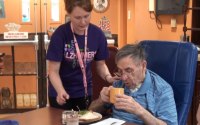The function of care homes Southend :
The terms of dedicated care home pathway functions before finally thinking about some of the challenges faced and next steps so if they could move on to the next step so just a few key facts about the locksmiths basildon sector. More broadly, they know that more than 850 resided in care homes and received public funding support. As Sean highlighted at the beginning, there are significant inequalities for people living in care homes. Often these people have complex and co-morbid mental, physical, cognitive social care needs, and there’s a real driver.

Particularly care homes Southend with the spotlight from covid to target those inequalities and deliver better care across the system. Finally, they know that there are estimates that 40 to 60 percent of care home residents show behaviors of concern or behavior Challenges. Those individuals can significantly strain the health and social care system when there are lots of placement moves and admissions to general or psychiatric beds. The next step is now in terms of some of the policy drivers; they know they had the updated, excellent dementia guidance in 2018, and that had an emphasis again on psycho-social interventions and reduced aims to reduce anti-psychotic prescribing where possible. They also know that the quality standards published the following year um really promoted a thorough holistic, and therapeutically informed assessment for those who have behaviors that challenge dementia.
Standards of care homes Southend :
There’s a real emphasis in those care homes’ Southend quality standards on meaningful activity and engagement. So they know there’s a significant role for mental health staff, and here about psychiatrists. The psychologists, mental health nurses, and occupational therapists coming together to deliver this holistic package of care they’re aiming for finally to say the positive and safe plan was launched in 2014 by the department of health. That really emphasized improving the quality of care and reducing unnecessary restrictions, and positive behavior support is the recommended approach for supporting people with behaviors that Challenge. That includes individuals with dementia, so that was a natural landmark Moment.
They go to the next step; this might be quite hard to see, so they apologize for that, but this is a helpful step-care model. They’ve been looking to embed within summary and borders for several years. Now really thinking about how they approach behaviors that challenge dementia and what they might expect from people in primary care and GPS before admission before referral to the community mental health teams for older people. So what you’ll see on this slide is that they have two tiers. Tiers one and two are very much targeted at the primary care level, so this is where they would expect the GPS care home staff and family carers to do health promotion uh identify physical health difficulties.
That could cause challenging behavior in dementia and treat those conditions identified at the tier 3 level. That is where the mental health team sits; they’re talking about protocol-led interventions, and what they mean by that is that they tailor. Adapt evidence-based practice and resources to the unique individual referred to us and give advice and signposting around mental health needs at the fourth tier, the more specialist here.

